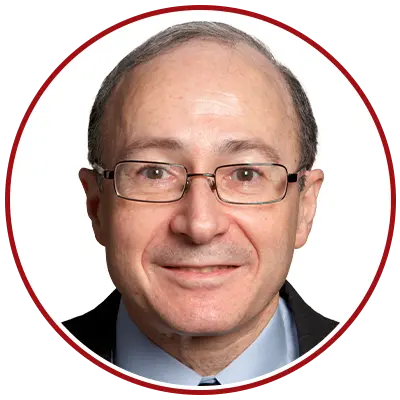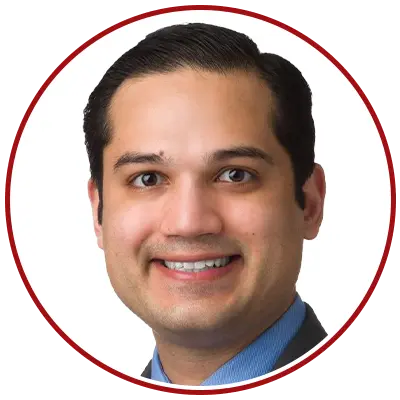- Case-Based Roundtable
- General Dermatology
- Eczema
- Chronic Hand Eczema
- Alopecia
- Aesthetics
- Vitiligo
- COVID-19
- Actinic Keratosis
- Precision Medicine and Biologics
- Rare Disease
- Wound Care
- Rosacea
- Psoriasis
- Psoriatic Arthritis
- Atopic Dermatitis
- Melasma
- NP and PA
- Skin Cancer
- Hidradenitis Suppurativa
- Drug Watch
- Pigmentary Disorders
- Acne
- Pediatric Dermatology
- Practice Management
- Prurigo Nodularis
- Buy-and-Bill
News
Article
Dermatology Times
Expert Reflections: Evolution of Patient Interactions
Author(s):
In a milestone year for Dermatology Times, our Editorial Advisory Board reflects on how patient interactions have changed over time.
As Dermatology Times celebrates its 45th anniversary, we invite you to join us on a journey through the most impactful milestones in dermatology’s history. Over the decades, advancements in clinical practices, groundbreaking treatments, and innovative technologies have revolutionized the specialty, benefiting both practitioners and patients alike. Earlier this month, we shared a timeline of impactful events in dermatology. Throughout the rest of the month, we'll gain invaluable insights from our esteemed Editorial Advisory Board (EAB) on the influential people, pivotal drugs, and cutting-edge technologies that have shaped dermatology.
We recently asked our EAB, "How have patient interactions changed since your career began?"

Omar Noor, MD: There has been a transition of expectations that patients have over the past 10 years. Once upon a time, patients believed they had to be toldwhat to do with their healthcare and they followed blindly. In reality, medicine is an art and offers the best results when treated as a team with the patient playing a pivotal role. We work together, to make you better.

Joel Schlessinger, MD: Email and even text interactions, with the ability to see a patient’s rash via a text photo or email, have changed the concept of being on call.Instead of painfully trying to determine what was happening with a drug reaction or itchy rash, we can now (with arguably some technological differences between generations) see what is going on with our patients from afar. The remarkable wonder of this can’t be understated for someone who used to trek to the office at all hours of the night to see patients with concerns that are now easily addressed in a text or phone call. Most importantly, the advent of telemedicine has been amazing to see, especially as it literally saved our practices during the pandemic, when we couldn’t see patients normally.While we clearly do less telemedicine now, years after the pandemic, we do have many patients who prefer it and can be seen without coming hundreds of miles to see us. I wouldn’t have ever imagined this back in 1992 when I started, yet now it is commonplace. It’s sad to think that the sense of wonder that the older dermatologists feel is just routine for newly minted dermatologists.We have so much that is commonly decried about the present practice of dermatology that it is nice to have something positive to say!

Mark Lebwohl, MD: Face-to-face interactions with patients have been hurt by the use of[electronic medical records], but our ability to effectively treat patients has improved, leading to happier patient-physician interactions.

Zoe Diana Draelos, MD: Patient interactions have changed greatly with the advent of the Internet. Patients now come in with all types of information, some accurate and some inaccurate, that must be addressed during the patient visit.

Tina Alster, MD: The biggest change occurred during and after the pandemic. Patients have heightened anxiety and are less civil than prepandemic. This attitude is (regrettably) pervasive.

Renata Block, PA-C: Patients are more savvy than they were and are becoming more vigorous advocates for their health. With access to so much information online, people can do their research and often come to the clinic with suspicion about their diagnosis; however, misinformation is rampant, and social media tends to send the patient down the wrong path. The need to redirect the patient happens often. Nonetheless, it is good to see dermatology professionals on these platforms challenge the myths and provide proper education.

Raj Chovatiya, MD, PhD: Patients are more educated than ever before. While many patients still look to their dermatologist for the final answer, you are often dealing with someone who has done research in advance—or will do copious research after you have a discussion. While there are instances where this can prove challenging, on the whole, it’s great to see patients taking some degree of responsibility for their health. As a big proponent for modernized shared decision-making, this can be very helpful for me as I work through multiple treatment options and want the patient to engage with me.

Helen Torok, MD: The patient physician interaction has changed for the better. They are more educated and more interactive due to their own ability to navigate the web and learn about their health and diseases.

Mona Shahriari, MD: With changes in reimbursement, face time with patients has gone down. I feel that we are being pushed to see more patients per day because the reimbursement per patient is less. As a result, patients are unhappy because they can’t spend enough time with their doctor and physicians are unhappy because they don’t have the time to bond with their patients. It’s all becoming very robotic and like an assembly line. Also, communication with patients over the phone has become more limited; patients prefer electronic methods of communication like text or email, which is taking away from the human side of medicine. And finally, patience and understanding has started to go down. Many times, patients forget that doctors are people too who have emergencies and life issues that arise and if their appointments are canceled or rescheduled, it’s nothing personal.

Roy Geronemus, MD: Patients are so much more knowledgeable about their diseases and treatments than they were years ago although many are misinformed though the internet and aggressive marketing.







